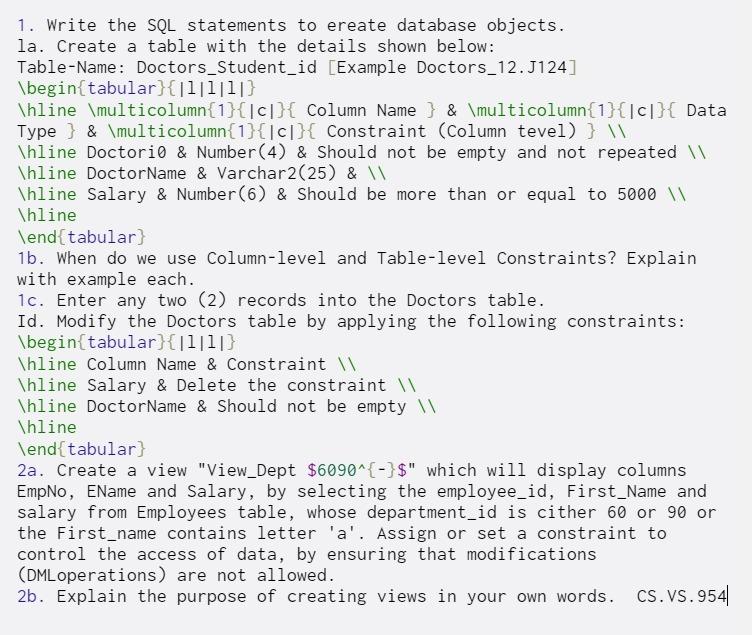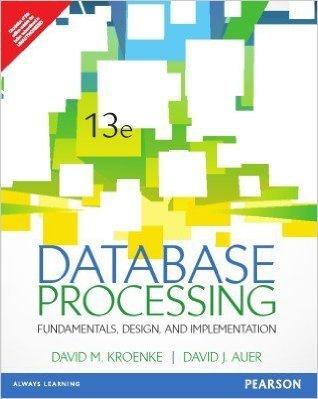Answered step by step
Verified Expert Solution
Question
1 Approved Answer
1. Write the SQL statements to ereate database objects. la. Create a table with the details shown below: Table-Name: Doctors_Student_id [Example Doctors_12.J124] begin{tabular}{|1|1|1|} hline multicolumn{1}{[c]}{

Step by Step Solution
There are 3 Steps involved in it
Step: 1

Get Instant Access to Expert-Tailored Solutions
See step-by-step solutions with expert insights and AI powered tools for academic success
Step: 2

Step: 3

Ace Your Homework with AI
Get the answers you need in no time with our AI-driven, step-by-step assistance
Get Started


